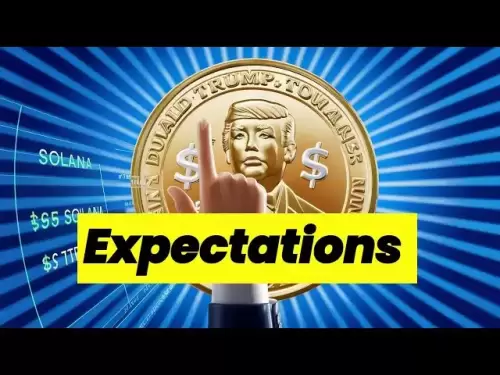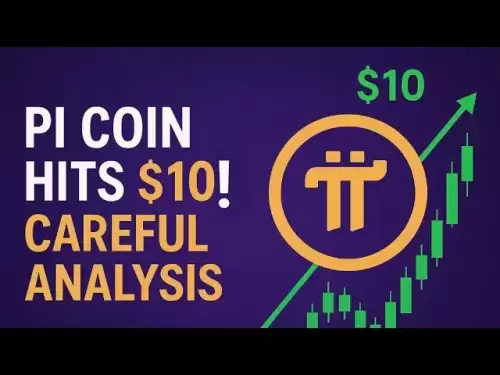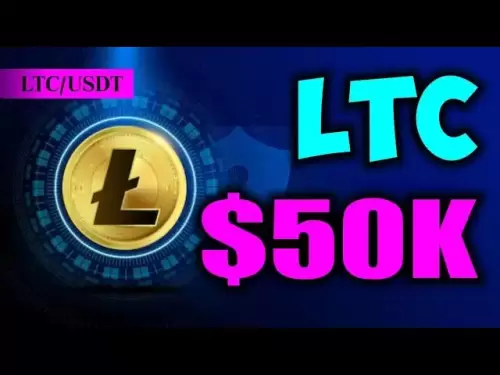-
 Bitcoin
Bitcoin $118400
0.19% -
 Ethereum
Ethereum $3766
5.19% -
 XRP
XRP $3.547
3.45% -
 Tether USDt
Tether USDt $1.000
0.01% -
 BNB
BNB $754.4
2.76% -
 Solana
Solana $182.1
2.48% -
 USDC
USDC $0.9998
-0.01% -
 Dogecoin
Dogecoin $0.2749
12.98% -
 Cardano
Cardano $0.8737
4.84% -
 TRON
TRON $0.3178
-0.78% -
 Hyperliquid
Hyperliquid $46.87
4.87% -
 Stellar
Stellar $0.4745
2.35% -
 Sui
Sui $3.945
4.11% -
 Chainlink
Chainlink $19.49
5.38% -
 Hedera
Hedera $0.2789
4.28% -
 Bitcoin Cash
Bitcoin Cash $549.5
5.60% -
 Avalanche
Avalanche $25.36
1.14% -
 Shiba Inu
Shiba Inu $0.00001576
5.38% -
 Litecoin
Litecoin $117.5
4.42% -
 UNUS SED LEO
UNUS SED LEO $8.987
-0.08% -
 Toncoin
Toncoin $3.299
2.83% -
 Polkadot
Polkadot $4.543
3.41% -
 Uniswap
Uniswap $10.69
5.28% -
 Ethena USDe
Ethena USDe $1.001
-0.02% -
 Pepe
Pepe $0.00001443
8.78% -
 Monero
Monero $326.4
0.36% -
 Bitget Token
Bitget Token $5.000
2.07% -
 Dai
Dai $0.9999
-0.02% -
 Aave
Aave $328.7
3.62% -
 Bittensor
Bittensor $428.6
3.35%
What is Polygon (MATIC)
Polygon (MATIC) is a layer-2 scaling solution for Ethereum, enhancing transaction speed and reducing costs through its PoS blockchain and support for EVM-compatible dApps.
Jul 12, 2025 at 03:21 pm
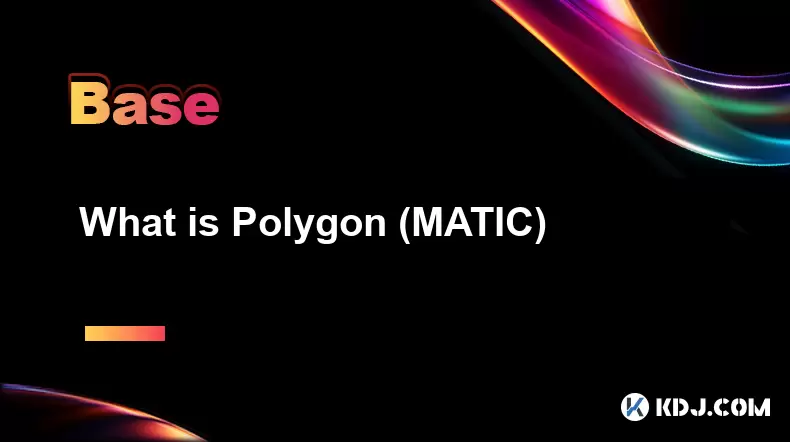
Overview of Polygon (MATIC)
Polygon, formerly known as the Matic Network, is a layer-2 scaling solution designed to enhance the performance and reduce the costs of transactions on the Ethereum blockchain. It operates by processing transactions off the main Ethereum chain and then finalizing them on the primary network, thereby improving speed and efficiency. The native cryptocurrency of the Polygon ecosystem is called MATIC, which plays a crucial role in securing the network, participating in governance, and paying for transaction fees.
The platform was launched in 2017 by a team of Indian developers including Jaynti Kanani, Sandeep Nailwal, and Anurag Arjun. Since its inception, Polygon has evolved from being a simple plasma-based sidechain into a more complex framework that supports multiple layer-2 solutions, including zero-knowledge rollups and optimistic rollups.
MATIC tokens are essential for staking within the network's Proof-of-Stake (PoS) consensus mechanism.
How Polygon Works
Polygon utilizes a modified version of the Plasma framework, which allows it to bundle multiple transactions into a single batch before submitting them to the Ethereum mainnet. This approach significantly reduces congestion on the primary chain and lowers gas fees for users.
At the core of Polygon’s architecture is its commit-chain model, where validators collect and verify transactions before committing them back to Ethereum. This ensures security while maintaining high throughput. Additionally, Polygon supports Ethereum-compatible smart contracts, making it easier for developers to migrate or deploy decentralized applications (dApps) without rewriting code.
Validators on the Polygon network are required to stake MATIC tokens to participate in block validation and earn rewards. These validators help maintain the integrity and decentralization of the system.
- Transactions are processed off-chain through Polygon’s PoS layer
- Batched data is submitted to Ethereum for finality
- MATIC holders can stake to secure the network and earn yield
The Role of MATIC Token
MATIC serves several critical functions within the Polygon ecosystem:
As a utility token, MATIC is used to pay for transaction fees on the Polygon network. Users must hold MATIC to interact with dApps built on Polygon, whether they're transferring assets, minting NFTs, or using DeFi protocols.
From a governance perspective, MATIC holders can vote on proposals related to upgrades, protocol changes, and treasury allocations. This gives token holders direct influence over the development and direction of the network.
Additionally, MATIC plays a key role in network security. Validators are required to stake MATIC as collateral to ensure honest behavior. If malicious activity is detected, their staked tokens can be slashed as a penalty.
Staking MATIC helps secure the network and provides passive income opportunities for token holders.
Key Features of Polygon
Polygon offers several features that distinguish it from other Ethereum layer-2 solutions:
One standout aspect is its compatibility with Ethereum Virtual Machine (EVM), allowing seamless integration with existing Ethereum tools and infrastructure. Developers can use familiar languages like Solidity and deploy dApps on Polygon with minimal adjustments.
Another important feature is the multi-chain architecture that enables Polygon to support various types of layer-2 solutions beyond its original PoS chain. This includes zkEVM, which brings zero-knowledge proofs to Ethereum-compatible systems for enhanced scalability and privacy.
Polygon also focuses heavily on decentralized finance (DeFi), NFTs, and Web3 projects, offering a scalable and cost-effective environment for these emerging technologies.
- Supports EVM-compatible smart contracts
- Offers low transaction fees and fast confirmations
- Enables cross-chain interoperability between different ecosystems
Use Cases of Polygon
Polygon has become a popular choice among developers due to its scalability and low-cost infrastructure. Many prominent DeFi platforms such as Aave, Curve Finance, and SushiSwap have deployed versions of their protocols on Polygon to offer users faster and cheaper transactions.
In the NFT space, Polygon has attracted numerous marketplaces like OpenSea, Mintable, and Rarible, enabling creators to mint and trade digital assets at a fraction of the cost compared to Ethereum’s mainnet.
Web3 gaming and metaverse projects have also adopted Polygon due to its high throughput and energy-efficient design, making it ideal for real-time interactions and microtransactions.
Polygon’s diverse use cases make it one of the most versatile layer-2 ecosystems in the crypto industry.
Frequently Asked Questions
Q: How do I buy MATIC tokens?
MATIC is available on major cryptocurrency exchanges such as Binance, Coinbase, Kraken, and KuCoin. You can purchase it using fiat currency or trade it against other cryptocurrencies like BTC or ETH.
Q: Can I stake MATIC on mobile wallets?
Yes, you can stake MATIC using compatible mobile wallets such as Trust Wallet or Polygon’s official wallet app. Ensure that the wallet supports staking functionality and follow the interface instructions to delegate your tokens.
Q: Is Polygon fully decentralized?
Polygon uses a decentralized network of validators secured by MATIC staking. However, since it relies on Ethereum for finality, its level of decentralization is tied to both its own PoS chain and the Ethereum mainnet.
Q: What is the difference between Polygon and Arbitrum?
While both are Ethereum layer-2 solutions, Polygon uses a PoS-based sidechain, whereas Arbitrum employs optimistic rollups. Polygon offers faster finality and lower latency, while Arbitrum aims for greater scalability and security through fraud proofs.
Disclaimer:info@kdj.com
The information provided is not trading advice. kdj.com does not assume any responsibility for any investments made based on the information provided in this article. Cryptocurrencies are highly volatile and it is highly recommended that you invest with caution after thorough research!
If you believe that the content used on this website infringes your copyright, please contact us immediately (info@kdj.com) and we will delete it promptly.
- Bitcoin's Wild Ride: Records, Rallies, and Reversals - A New Yorker's Take
- 2025-07-21 02:30:12
- CoinDCX Hack: $44 Million Lost, User Funds Safe... For Now?
- 2025-07-21 02:30:12
- BONK, FLOKI, Remittix Predictions: Navigating the Meme Coin Mania and Beyond
- 2025-07-21 02:50:13
- Hacker Attack on CoinDCX: Funds Safe, But Lessons Learned
- 2025-07-21 02:50:13
- Rachel Booth: Missing Person Case and Jogging Clues Unfold
- 2025-07-21 02:55:12
- Iron Maiden: Music Legends Celebrate 50 Years with Royal Mint Coin
- 2025-07-21 00:30:13
Related knowledge

What is the difference between a sidechain and a Layer 2?
Jul 20,2025 at 11:35pm
Understanding the Concept of SidechainsA sidechain is a separate blockchain that runs parallel to the main blockchain, typically the mainnet of a cryp...

What is the Inter-Blockchain Communication Protocol (IBC)?
Jul 19,2025 at 10:43am
Understanding the Inter-Blockchain Communication Protocol (IBC)The Inter-Blockchain Communication Protocol (IBC) is a cross-chain communication protoc...

How does sharding improve scalability?
Jul 20,2025 at 01:21am
Understanding Sharding in BlockchainSharding is a database partitioning technique that is increasingly being adopted in blockchain technology to enhan...

What is the "crypto trilemma" of scalability, security, and decentralization?
Jul 19,2025 at 06:28pm
Understanding the Concept of the Crypto TrilemmaThe crypto trilemma refers to the challenge of simultaneously achieving scalability, security, and dec...

What is a cliff and vesting schedule in tokenomics?
Jul 20,2025 at 10:28am
What Does a Cliff Mean in Tokenomics?In tokenomics, a cliff refers to a specific period during which token holders are not allowed to access or transf...
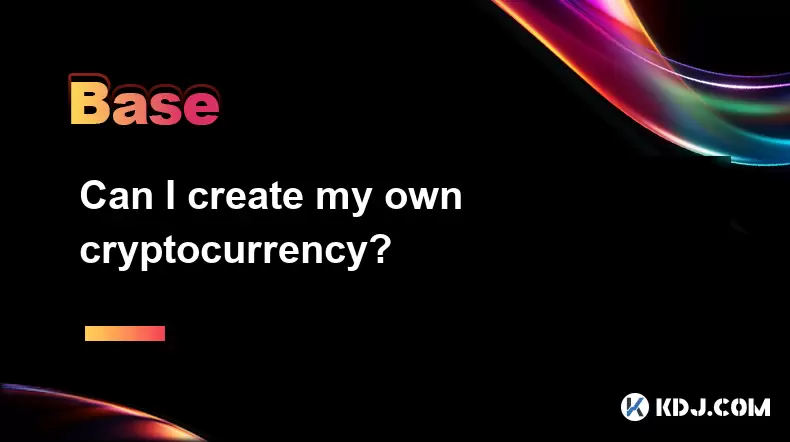
Can I create my own cryptocurrency?
Jul 20,2025 at 11:49pm
Understanding the Basics of Creating a CryptocurrencyYes, you can create your own cryptocurrency, but it involves a combination of technical knowledge...

What is the difference between a sidechain and a Layer 2?
Jul 20,2025 at 11:35pm
Understanding the Concept of SidechainsA sidechain is a separate blockchain that runs parallel to the main blockchain, typically the mainnet of a cryp...

What is the Inter-Blockchain Communication Protocol (IBC)?
Jul 19,2025 at 10:43am
Understanding the Inter-Blockchain Communication Protocol (IBC)The Inter-Blockchain Communication Protocol (IBC) is a cross-chain communication protoc...

How does sharding improve scalability?
Jul 20,2025 at 01:21am
Understanding Sharding in BlockchainSharding is a database partitioning technique that is increasingly being adopted in blockchain technology to enhan...

What is the "crypto trilemma" of scalability, security, and decentralization?
Jul 19,2025 at 06:28pm
Understanding the Concept of the Crypto TrilemmaThe crypto trilemma refers to the challenge of simultaneously achieving scalability, security, and dec...

What is a cliff and vesting schedule in tokenomics?
Jul 20,2025 at 10:28am
What Does a Cliff Mean in Tokenomics?In tokenomics, a cliff refers to a specific period during which token holders are not allowed to access or transf...

Can I create my own cryptocurrency?
Jul 20,2025 at 11:49pm
Understanding the Basics of Creating a CryptocurrencyYes, you can create your own cryptocurrency, but it involves a combination of technical knowledge...
See all articles





















